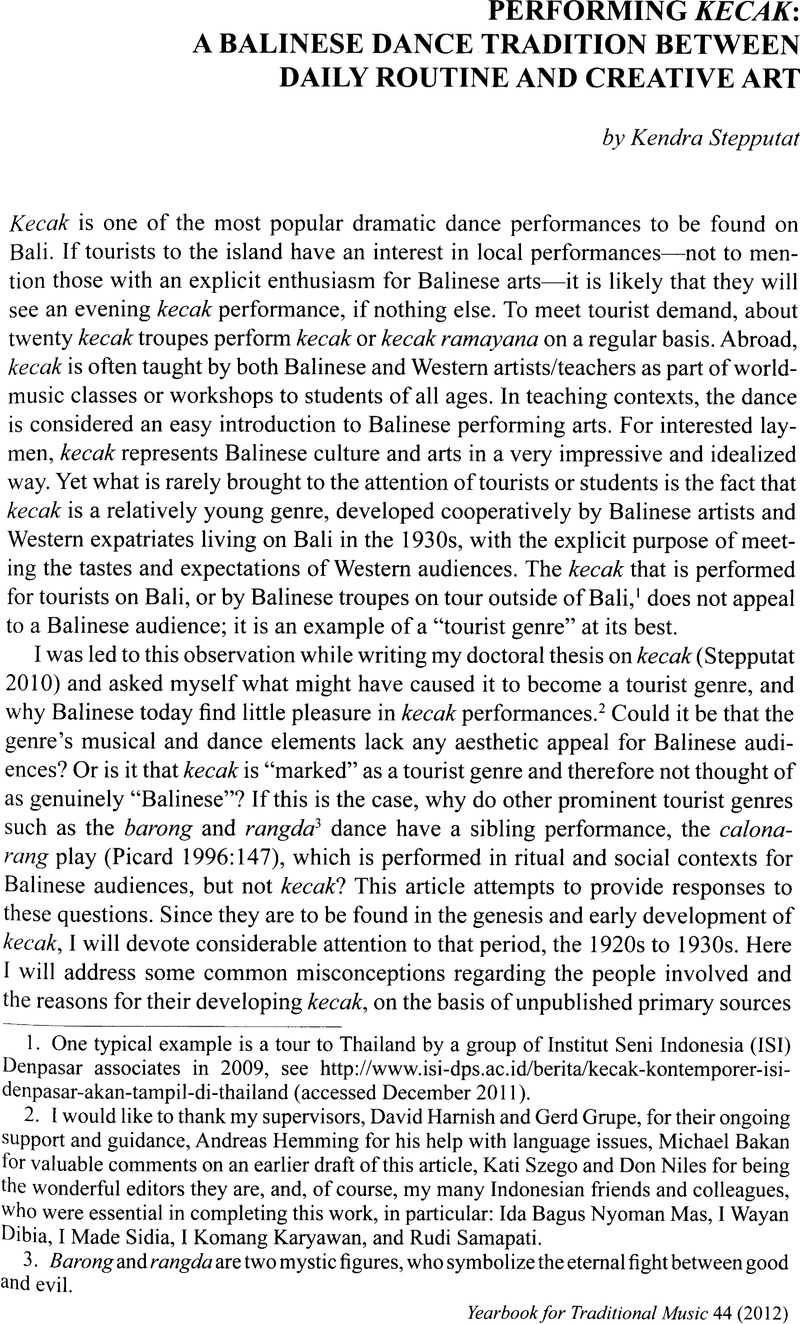Crossref Citations
This article has been cited by the following publications. This list is generated based on data provided by Crossref.
Escobar Varela, Miguel
and
Hernández-Barraza, Luis
2019.
Digital dance scholarship: Biomechanics and culturally situated dance analysis.
Digital Scholarship in the Humanities,
Bosnak, Judith E.
2020.
Moldear la danza-drama barong en el Bali paradisiaco: discursos orientalistas de Miguel Covarrubias y sus redes.
Anales del Instituto de Investigaciones Estéticas,
p.
77.
Goldman, Jonathan
and
Strachan, Jeremy
2020.
Indonesian Cultural Diplomacy and the First International Gamelan Festival and Symposium at Expo 86.
American Music,
Vol. 38,
Issue. 4,
p.
428.
Santosa, Hendra
Sutirtha, I. Wayan
Saptono
and
Anggraeni, Reni
2024.
DISMANTLING PUSPANJALI DANCE TECHNIQUES TO INCREASING INTEREST IN LEARNING BALINESE DANCE IN CHILDREN.
Journal of Southwest Jiaotong University,
Vol. 59,
Issue. 1,
Hidajat, Robby
Pujiyanto, Pujiyanto
Hasyimy, Muhammad 'Afaf
Aprilyawati, Allfa Andranica Devya
Haris, Adinda Nur Ramadhani
and
Muhid, Syamsul Hirdi Bin
2024.
Comical Attractions of Hanoman as Commercial Tractive Power of Kecak Ramayana in Pura Uluwatu Bali.
KnE Social Sciences,
Sukatman, S.
and
Wuryaningrum, Rusdhianti
2024.
The origin of the name Kecak dance, sociocultural context, symbolic power, and management challenges of the Indonesian tourism industry in global competition.
Cogent Arts & Humanities,
Vol. 11,
Issue. 1,



